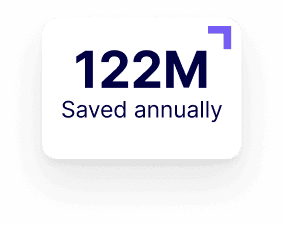Medical billing in Quebec comes with its own distinct lexicon, so it’s no surprise many physicians, especially new ones, find it confusing.
RAMQ billing involves specialized terms, codes, and categories that directly influence how physicians are compensated for their services. A clear understanding of these terms supports billing accuracy, regulatory compliance, and fair compensation for every act performed. Regardless of your care setting, mastering these definitions will limit claim rejections, minimize lost revenue, and allow smoother cross-team coordination.
To simplify your billing process, we’ve compiled a guide to 11 essential RAMQ billing terms every doctor should know.
-
Act
An act (acte) refers to a procedure or action performed by a physician. Each act is assigned a specific code and rate, with both listed in the RAMQ manual.
-
Remuneration by act
Under remuneration by act (rémunération à l’acte), physicians bill directly for the services they provide. Compensation is based on the acts submitted for each patient encounter.
-
Mixed remuneration
Mixed remuneration (rémunération mixte) combines two payment types:
- A reduced rate per billed act
- A fixed daily rate per half-day of practice
This system applies only in specific practice sectors and designated institutions, subject to departmental authorization.
Note: It is only valid between 7 a.m. and 5 p.m. on weekdays, excluding holidays.
-
Medico-administrative hourly rate and teaching activities
Physicians receive this type of remuneration for participation in:
- Departmental or administrative meetings
- Academic activities, such as reading clubs or resident instruction
These are paid at an hourly rate, rather than per act, as they do not involve direct patient care.
-
RAMQ time slots
RAMQ divides each day into specific time slots. Physicians must declare the slot or slots worked for proper compensation.
Standard time slots:
- Night: 12:00 a.m. – 7:00 a.m.
- Morning: 7:00 a.m. – 12:00 p.m.
- Afternoon: 12:00 p.m. – 5:00 p.m.
- Evening: 5:00 p.m. – 12:00 a.m.
For medico-administrative functions:
- Afternoon: 12:00 p.m. – 7:00 p.m.
- Evening: 7:00 p.m. – 12:00 a.m.
-
Premium for remote locations
This premium (majoration) rewards physicians working in regions with limited healthcare resources.
Eligibility requirements:
- More than 50% of practice must occur in a remote territory.
- Physicians must file a Statement of Primary Territorial Practice – Diversified Compensation annually.
Different rates apply depending on territory and physician status. Temporary support or substitution work often qualifies for a minimum bonus.
-
Elements of context
Elements of context (éléments de contexte) clarify the conditions under which services were performed.
They can:
- Modify billing rates
- Adjust limitations
- Clarify specific circumstances
Physicians may select one or more elements of context for each billed service.
-
On-call availability
On-call availability (garde en disponibilité) refers to being available to respond to patient needs without necessarily being on site.
Quebec recognizes three types:
- Local on-call availability (garde locale): Specialized physician available within a healthcare facility.
- Support on-call availability (garde en support): A second physician, in the same specialty, available to assist the primary on-call physician.
- Multi-facility on-call availability (garde multi-établissements): A physician on call at one site but covering additional facilities.
Understanding your on-call category is vital to ensuring accurate RAMQ billing and fair compensation.
-
Dispensing site
The dispensing site (lieu de dispensation) identifies where a service is provided.
It may differ from the physical location depending on the service arrangement.
Two types exist:
- Coded sites (physical): Facilities recognized by RAMQ, including hospitals, CLSCs, rehabilitation centres, and FMGs.
- Uncoded sites (geographical): Locations not recognized by RAMQ, which require a postal or location code and status (office, home visit, or other).
-
Reference site
The reference site (lieu en référence) differs from the dispensing site. It designates where responsibility for the patient or communication originates.
Examples include:
- The facility overseeing patient care during multi-facility on-call duty
- The source of a consultation request or phone call
- The university linked to supervision activities
-
Professional Reference
A professional reference identifies the healthcare professional who refers a patient for specialized care, diagnostic confirmation, or ongoing treatment.
Simplify your medical billing
Beyond terminology, medical billing can be cumbersome. Wasted time and energy on billing procedures reduces time with patients and increases work-life burden.
Fortunately, Xacte Medical Billing by Petal will make your billing easier. Xacte provides real-time recommendations on a wide range of possible errors and provides personalized support from Live Agents. Use it to bill simpler and save more time for your patients.
By choosing Xacte, you’ll access:
- Expert advisors in RAMQ billing
- A proven web and mobile solution platform to simplify claims
- Personalized support to help you focus on what matters most: patient care and on-call availability
Now, go forward and use these medical billing terms with confidence. You’re ready for smarter billing.
Take control of your revenue with Xacte:



